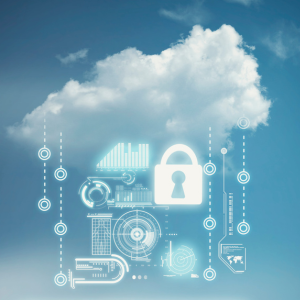As cyberattacks grow more advanced, achieving digital resilience requires more than a traditional ‘set-it-and-forget-it’ backup approach. Legacy methods no longer provide the protection necessary against today’s sophisticated threats—especially ransomware. To safeguard your data and ensure business continuity, you need a modern backup strategy that encompasses cyber resilience as an integral part of a holistic approach, ensuring your systems can withstand and recover from attacks. The Limitations of Traditional Backups Traditional… Read More
Cloud Computing in Motion: Balancing Cost, Outcomes, and Innovation
Cloud computing is often viewed as a transformative force, offering businesses unprecedented flexibility, scalability, and access to cutting-edge technologies. However, the cloud is far from a static environment—it’s a constantly shifting landscape where businesses must continually adapt their strategies to meet evolving goals. Instead of being seen as merely a cost center, the cloud is best understood as a dynamic tool that requires ongoing refinement and adjustment to drive success…. Read More
Simplifying Cybersecurity: An Evergreen Approach
In the fast-paced world of cybersecurity, unexpected changes can throw even the most prepared IT and security teams into a tailspin. Take, for example, the recent ban on Kaspersky products in the U.S. When the U.S. Department of Commerce issued a ban on Kaspersky products with a September 29 deadline, organizations were already up against a tight turn to quickly find a replacement solution. Then, Kaspersky further compressed the project… Read More
A Salute to the Unsung Heroes of the Digital World
In today’s interconnected world, the CrowdStrike outage serves as a stark reminder of our dependence on technology—and the irreplaceable value of the experts who manage it. Whether it’s a faulty update from a service provider or a sophisticated cyberattack, our IT and security professionals are the unsung heroes who pull everything back together. In what’s being called the biggest IT outage in history, Microsoft estimates that as many as 8.5… Read More
Holidays are for Hacking: 5 Reasons Cybercriminals Target Your Downtime
While you and your team are out of the office enjoying downtime, this is when hackers get to work. Adversaries intentionally pick times when it’s difficult for your team to respond—such as evenings, holidays, and weekends. Take, for instance, car dealership SaaS platform CDK Global. They experienced a breach during the Juneteenth holiday, and then suffered another breach as they were starting to restore their systems. As of this writing,… Read More
Strategies to Operationalize Cybersecurity for Enhanced Data Protection
Organizations are navigating a perfect storm in data protection, driven by a rapidly evolving threat landscape and the exponential growth of data. With global data volumes projected to reach 175 zetabytes by 2025, the need for robust cybersecurity measures to protect that data has never been more critical. Operationalizing security measures is essential to effectively safeguard any organization’s vast amount of sensitive information. 8 Strategies to Operationalize Data Protection Operationalizing… Read More
Why 80% of Ransomware Victims Suffer Repeat Attacks
In the realm of cybersecurity, the adage “lightning never strikes the same place twice” doesn’t apply. Organizations that have suffered one cyberattack are commonly targeted again, regardless of company size or industry. Ransomware by the Numbers Why Do Attackers Repeatedly Target the Same Company? The first cyberattack yields detailed insights into a company’s security architecture and response protocols. This intel becomes invaluable for orchestrating subsequent attacks that are often more… Read More
The New Frontier in Cybersecurity: A Swift Threat Response
Today’s digital age is a lot like the wild west. Cyber threats are like those old-time outlaws, always looking for a way to sneak into your operations. And just like in those classic westerns, it’s not enough to know there’s a bandit around; you’ve got to be quick on the draw to respond. That’s where we see a lot of businesses facing a real challenge. The Wild West of Cyber… Read More
Who Shares the Responsibility for Cloud Security?
Being in the cloud doesn’t mean your organization is secure. Maintaining proactive threat detection and response in the cloud is a constant, proactive process. What is meant by cloud security? While a cloud provider is responsible for securing their underlying infrastructure (physical, network, and host security), as an organization and user, you are responsible for securing your applications, data, user access, and configurations within your cloud environment. Mitigating cyber-risk requires… Read More
Securing the Future: How Network Resilience and Cybersecurity Interlock in the Digital Age
In the rapidly evolving digital landscape, the once-clear boundaries between network resilience and cybersecurity are increasingly blurred. These two critical areas have become interdependent, each reinforcing the other to create a robust defense against the myriad of threats targeting modern businesses. A solid security stance in today’s digital age demands a holistic approach, recognizing how network resilience and cybersecurity not only coexist but support and enhance one another. This synergy… Read More
- « Previous Page
- 1
- 2
- 3
- 4
- …
- 13
- Next Page »









